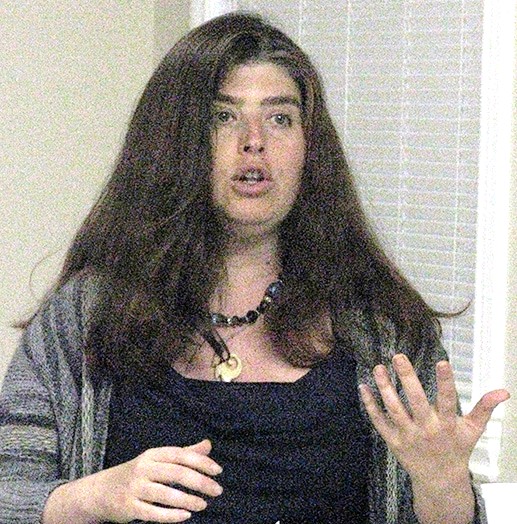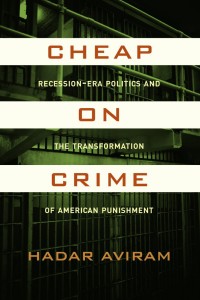Monday, March 30, 2015

Hastings law professor Hadar Aviram discussed her new book, Cheap on Crime: Recession-Era Politics and the Transformation of American Punishment.
Cheap on Crime documents a political sea change. Decades of ever-increasing sentences for criminals proved to be prohibitively expensive, particularly in a recession, so now we are adopting policies—often but not always less punitive ones—to reduce the cost of the criminal justice system. “Tough on crime” has become cheap on crime, although not always smart on crime.
Starting in the late 1960s, America began what amounted to a mass incarceration project. Today, America is the world leader in incarceration, with 80,000 inmates. But something has changed. The 2008 presidential election was the first since the sixties in which crime was not a major issue. In the 2012 presidential election, crime was again a non-issue. Incarceration rates have begun to fall. Four states have abolished the death penalty. Washington and Colorado have legalized marijuana.
According to Hadar, the recession helped to change the political climate. By speaking the language of cost-saving, politicians can now advocate reform without being punished politically.
Hadar identified four ways in which the recession helped to make cost a driving force in criminal justice policy. First, cost became a prime topic of public discourse about the criminal justice system, eclipsing such other concerns as human rights, innocence, deterrence, and racial discrimination. Second, a left-right political coalition has emerged in favor of criminal justice reforms. For example, in 2010, an otherwise ideologically divided Congress passed the Fair Sentencing Act, which reduced some federal sentences and reduced the difference between penalties for crack and powder cocaine. Further such legislation is likely. As described in a recent article in the New York Times, a group called the Coalition for Public Safety has brought together formidable political players on the left and right “on behalf of emerging proposals to reduce prison populations, overhaul sentencing, reduce recidivism and take on similar initiatives.”
Third, states have instituted new cost-saving practices, such as the closing of prisons and the exporting of prisoners to places where incarceration is less costly. Fourth, the public perception of prisoners has changed from wards of the state to consumers of state services—consumers who are now often charged by the state for the cost of their incarceration. For example, Riverside County charges jail inmates $140 per night. In Fremont, jail inmates are not charged, unless they want to be placed in the safer of two jails.
As the last two examples suggest, “cheap on crime” policies are not necessarily wise or humane. Moreover, at least some reforms spurred by cost reduction are likely to be abandoned should crime increase. Nonetheless, Hadar welcomes the new emphasis on cost. Properly framed, she believes, it can promote criminal justice reform, including abolition of the death penalty and solitary confinement, two causes to which she is passionately committed. Here is her five-minute pitch against the death penalty.
